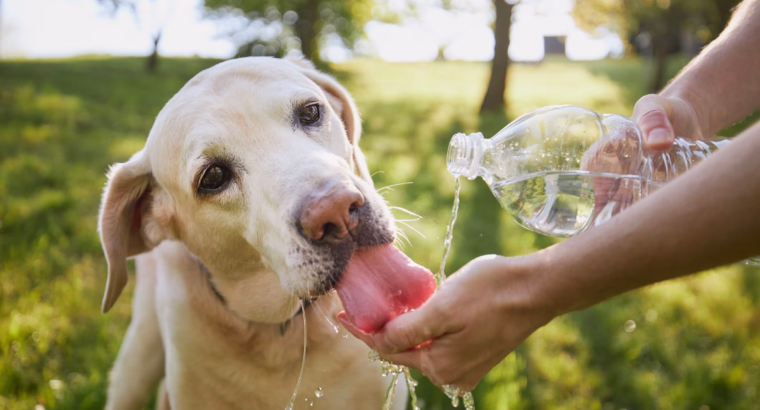Summer can be a challenging and potentially dangerous time for both pets and people. Coping with rising temperatures and high humidity can be difficult enough, but certain areas also face the added risk of intense heat and power outages caused by storms, sometimes leading to tragic consequences.
To ensure the safety and well-being of your pets and family during the summer, we offer helpful tips that can keep everyone healthy and cool:
Practice basic summer safety, and never leave your pets in a parked car, even for a brief moment. The temperature inside a vehicle can rapidly rise to dangerous levels, leading to irreversible organ damage or death for your pet. Be aware of the risks and follow this guide to help a pet left inside a hot car.
Watch out for humidity, as it intensifies the negative impact of high temperatures on your pets. Animals pant to cool themselves, but high humidity hampers this process and can lead to rapid increases in body temperature, reaching dangerous or even lethal levels. Keep an eye on your pet’s temperature and take action if it exceeds 104 degrees Fahrenheit.
Limit your pet’s exercise on hot days, adjusting the intensity and duration according to the temperature. Avoid exercising them during the hottest hours, and be cautious with pets more susceptible to heat-related issues, such as those with white-colored ears or short-nosed breeds. Walk your dog on grass to protect their paws from hot asphalt, and always carry water to prevent dehydration.
Fans are not as effective in cooling off pets as they are for humans, so don’t rely solely on them to keep your pets cool.
Provide ample shade and cold water whenever your pet is outside. Use tree shade or tarps that allow airflow and avoid doghouses, as they can trap heat and worsen the situation.
Help your pets cool down both indoors and outdoors. Make DIY pupsicles for dogs and provide water for them at all times. Consider using cooling body wraps, vests, or mats soaked in cool water, which can keep your pet cool for up to three days.
Be vigilant for signs of heatstroke, which can be life-threatening. Look for symptoms like heavy panting, glazed eyes, rapid heartbeat, difficulty breathing, excessive thirst, lethargy, fever, dizziness, lack of coordination, profuse salivation, vomiting, a deep red or purple tongue, seizures, or unconsciousness. Certain animals are more at risk, such as the very young or old, overweight, unconditioned to exercise, or those with heart or respiratory diseases.
If your pet experiences heatstroke, move them to a shaded or air-conditioned area. Apply ice packs or cool towels to their head, neck, and chest, and offer small amounts of cool water or ice cubes. Seek immediate veterinary attention.
Prepare for power outages caused by summer storms by creating a disaster plan to keep your pets safe from heatstroke and other temperature-related issues.
By following these guidelines, you can ensure the well-being of your beloved pets and family during the hot summer months. Stay safe and cool!


